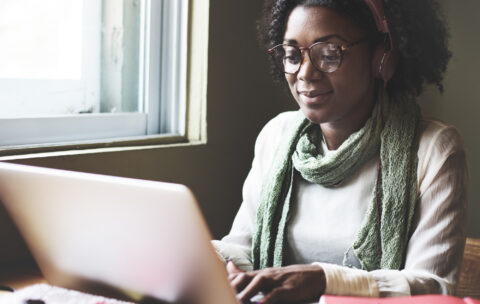Filter by Topic
Filter by Vendor
Microsoft Office PowerPoint 2019: Part 1
Course Description: It’s hard to imagine a day going by …
What you'll learn
Identify the basic features and functions of PowerPoint.
Develop a PowerPoint presentation.
Perform advanced text editing operations.
Add graphical elements.
Format graphical elements.
Prepare to deliver your presentation.
Microsoft Office Outlook 2019: Part 1
Course Description: Email has become one of the most widely …
What you'll learn
In this course, you will use Outlook to manage your email communications, including composing, reading, and responding to emails; schedule appointments and meetings; manage contact information; schedule tasks and create notes; customize message response options; and organize your mail.
Navigate Outlook to read and respond to email.
Use the Address Book and format and spell check new messages.
Attach files and insert illustrations to messages.
Customize read and response options.
Use flags, categories, and folders to organize messages.
Create and work with Contacts.
Create appointments and schedule meetings in Calendar.
Create and work with Tasks and Notes.
Related products
Microsoft Office Access 2019: Part 3
Course Description: You’ve covered many of the basic functions of …
What you'll learn
Share data across applications.
Use action, unmatched, and duplicate queries to manage data.
Create complex reports and forms.
Use macros to improve user interface design.
Use VBA to extend database capabilities.
Perform database management tasks such as backup, compacting, repairing, performance analysis, checking object dependencies, and documenting.
Implement security strategies and distribute a database to multiple users.
Microsoft Office Access 2019: Part 2
Course Description: Your training and experience using Microsoft® Office Access® …
What you'll learn
Provide input validation features to promote the entry of quality data into a database.
Organize a database for efficiency and performance, and to maintain data integrity.
Improve the usability of Access tables.
Create advanced queries to join and summarize data.
Use advanced formatting and controls to improve form presentation.
Use advanced formatting and calculated fields to improve reports.
Microsoft Office Access 2019: Part 1
Course Description: Data is everywhere. Most job roles today involve …
What you'll learn
Navigate within the Access application environment, create a simple database, and customize Access configuration options.
Organize and manage data stored within Access tables.
Use queries to join, sort, and filter data from different tables.
Use forms to make it easier to view, access, and input data.
Create and format custom reports.
Microsoft Office Excel (2019-2016-2013): Advanced
Course Description: Clearly, you use Excel a lot in your …
What you'll learn
Work with multiple worksheets and workbooks.
Share and protect workbooks.
Automate workbook functionality.
Use Lookup functions and formula auditing.
Forecast data.
Create sparklines and map data.
DP-100T01-A: Designing and Implementing a Data Science Solution on Azure
360° Microsoft Azure data science certification Course The Microsoft Azure …
AZ-500T00-A: Microsoft Azure Security Technologies
Course Description: This course provides IT Security Professionals with the …
What you'll learn
Implement enterprise governance strategies including role-based access control, Azure policies, and resource locks.
Implement an Azure AD infrastructure including users, groups, and multi-factor authentication.
Implement Azure AD Identity Protection including risk policies, conditional access, and access reviews.
Implement Azure AD Privileged Identity Management including Azure AD roles and Azure resources.
Implement Azure AD Connect including authentication methods and on-premises directory synchronization.
Implement perimeter security strategies including Azure Firewall.
Implement network security strategies including Network Security Groups and Application Security Groups.
Implement host security strategies including endpoint protection, remote access management, update management, and disk encryption.
Implement container security strategies including Azure Container Instances, Azure Container Registry, and Azure Kubernetes.
Implement Azure Key Vault including certificates, keys, and secretes.
Implement application security strategies including app registration, managed identities, and service endpoints.
Implement storage security strategies including shared access signatures, blob retention policies, and Azure Files authentication.
Implement database security strategies including authentication, data classification, dynamic data masking, and always encrypted.
Implement Azure Monitor including connected sources, log analytics, and alerts.
Implement Azure Security Center including policies, recommendations, and just in time virtual machine access.
Implement Azure Sentinel including workbooks, incidents, and playbooks.










